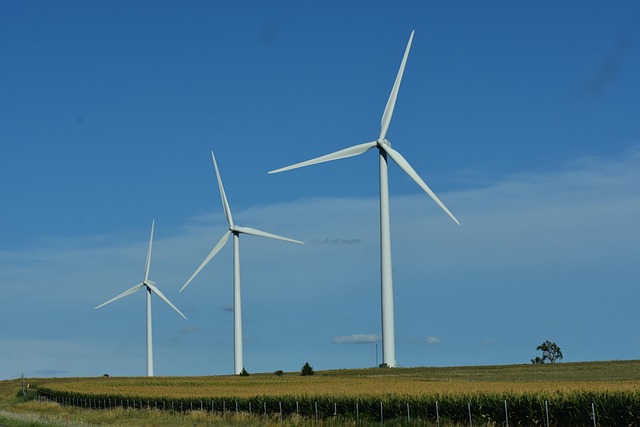Renewable Power 101: Understanding the Fundamentals
In an age when climate change poses one of the gravest challenges to humanity, the transition from fossil fuels to renewable energy sources has become a vital necessity. Renewable power, derived from naturally replenished resources, offers significant advantages in terms of sustainability, environmental preservation, and energy security. This article aims to explore the fundamentals of renewable power, its potential benefits, various forms, and the challenges that lie ahead in the quest for a sustainable energy future.
What is Renewable Power?
Renewable power refers to energy produced from sources that are replenished naturally over short periods, in contrast to fossil fuels such as coal, oil, and natural gas, which take millions of years to form. The primary forms of renewable energy include solar, wind, hydroelectric, geothermal, and biomass. Each of these sources plays a unique role in the global energy landscape and contributes to reducing greenhouse gas emissions.
The Importance of Renewable Energy
As the impacts of climate change become increasingly evident, the importance of transitioning to renewable energy cannot be overstated. Several key factors highlight the need for this shift:
Environmental Benefits
Renewable energy sources generate electricity with minimal or no direct emissions of greenhouse gases. This drastically reduces air pollution and mitigates the effects of climate change. By harnessing renewable technologies, society can play a crucial role in addressing environmental degradation.
Energy Security
Renewable energy enhances energy security by diversifying energy sources and relying less on imported fossil fuels. This reduces vulnerability to geopolitical tensions and market fluctuations associated with oil and gas prices. By investing in local renewable energy infrastructure, countries can create a more stable and self-sufficient energy system.
Economic Growth and Job Creation
The renewable energy sector has proven to be a significant driver of economic growth and job creation. The installation and maintenance of renewable energy systems require a workforce with varied skills, thus providing numerous employment opportunities. Transitioning to renewable sources can stimulate local economies, especially in regions historically reliant on fossil fuels.
Public Health
Shifting to renewable power can lead to substantial public health benefits. Traditional energy systems, particularly coal and oil, produce air and water pollutants that can cause health issues such as asthma, respiratory diseases, and other chronic conditions. By reducing reliance on these harmful energy sources, communities can enjoy cleaner air and improved health outcomes.
Types of Renewable Energy Sources
Understanding the different types of renewable energy sources is crucial for grasping the full picture of the renewable energy landscape. Here is an overview of the primary types:
Solar Energy
Solar energy harnesses sunlight through solar panels, converting it into electricity or heat. It is one of the most abundant renewable energy sources available, and its applications range from residential rooftop installations to large-scale solar farms. Solar technology has advanced rapidly in recent years, leading to lower costs and increased efficiency.
Wind Energy
Wind energy is generated by capturing the movement of air with wind turbines. Wind farms, whether onshore or offshore, can produce massive amounts of electricity, often at lower prices than fossil fuels. Wind energy has become one of the fastest-growing renewable sources worldwide, and advancements in turbine technology continue to enhance its efficiency and reliability.
Hydroelectric Power
Hydroelectric power utilizes the flow of water to generate electricity. Dams and rivers create potential energy, which is transformed into kinetic energy as water flows through turbines. While hydroelectric power can produce large amounts of electricity, it requires significant infrastructure and can have environmental impacts on local ecosystems. Small-scale hydro projects offer a more sustainable approach while minimizing ecological disruption.
Geothermal Energy
Geothermal energy taps into the Earth’s internal heat to generate electricity or provide direct heating. This energy source is particularly effective in regions with volcanic activity where hot springs and geysers indicate significant geothermal potential. While geothermal energy offers reliable and consistent power, its geographical limitations can restrict broader implementation.
Biomass Energy
Biomass energy comes from organic materials such as plants, agricultural waste, and forestry products. Through combustion or conversion to biogas, biomass can produce heat, electricity, or biofuels. While biomass is renewable, its sustainability depends on factors such as resource management and land-use practices. Responsible sourcing is essential to ensure that biomass production does not lead to deforestation or food insecurity.
Challenges Facing Renewable Energy
Despite the numerous benefits associated with renewable energy, there are challenges that must be addressed to fully realize its potential. These challenges include:
Intermittency and Reliability
Many renewable energy sources, particularly solar and wind, are intermittent by nature. This means that electricity generation can fluctuate based on weather conditions and time of day. This intermittency poses a significant challenge for integrating renewable power into existing grids, which require a consistent and reliable energy supply. Energy storage technologies, such as batteries and pumped hydro storage, are essential for mitigating this issue.
Infrastructure and Investment
Transitioning to renewable energy requires substantial investment in infrastructure. This includes building new power plants, upgrading transmission lines, and developing smart grid technology. Policymakers and private investors must collaborate to channel sufficient resources into renewable projects while ensuring economic viability.
Policy and Regulatory Frameworks
Government policies play a crucial role in influencing the growth of renewable energy markets. While many countries have implemented supportive policies, uncertainty around regulations and incentives can hinder investment and development. A stable and predictable regulatory environment is essential for attracting investment and fostering innovation in the renewable energy sector.
Looking to the Future
The transition to renewable power is not just a possibility; it is an imperative for a sustainable future. As technological advancements continue to reduce costs and improve efficiency, renewable energy is becoming increasingly competitive with fossil fuels. Governments, industries, and society at large must prioritize investment in renewable energy, research and development, and sustainability practices.
Public awareness and engagement are also critical. As communities become more educated about the benefits and challenges of renewable energy, grassroots movements can drive demand for sustainable solutions. Moreover, partnerships between various stakeholders—governments, businesses, environmental organizations, and communities—will be necessary to ensure a collective effort towards a cleaner, safer, and more sustainable energy future.
Conclusion
Renewable power represents a bright path forward for humanity in addressing some of the most pressing challenges of our time—climate change, energy insecurity, and public health concerns. By understanding the fundamentals of renewable energy and investing in its development, we can create a more sustainable and equitable world. The transition may be fraught with challenges, but the benefits of renewable energy are clear, underlining its essential role in achieving a sustainable future for generations to come.



